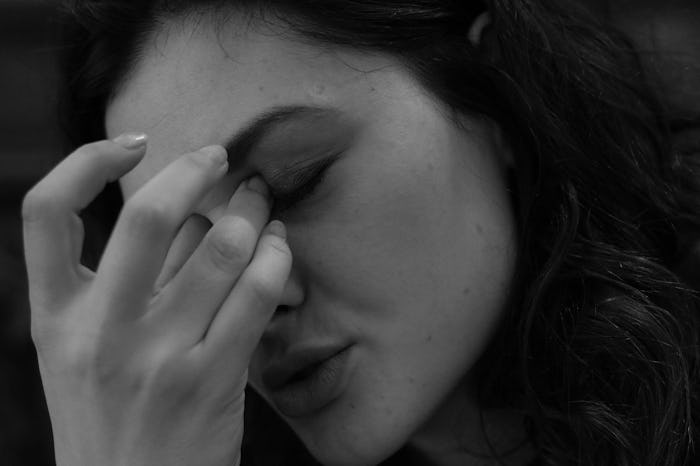An anxiety attack can be one of the scariest things to experience. Most people are familiar with the typical symptoms of an anxiety attack: rapid heart rate, tightness in your chest, and shortness of breath. But, even when you are in the middle of it, there are several other things you don't realize are signs of an anxiety attack.
According to the Anxiety and Depression Association of America (ADAA), anxiety disorders are the most common mental illness in the U.S., affecting 40 million adults, or 18 percent of the population. They can develop from a variety of risk factors, including genetics, brain chemistry, personality, and life events. Anxiety disorders are highly treatable, yet only about one-third of those suffering seek treatment.
People with anxiety disorders may experience anxiety or panic attacks. These are abrupt onsets of intense fear or discomfort that reach a peak within a few minutes. According to an ABC News article by Cathy Frank, M.D. of Henry Ford Hospital, anxiety attacks and panic attacks have similar symptoms but are not exactly the same. An anxiety attack often comes in reaction to a stressor, but a panic attack can be unprovoked and unpredictable, even occurring in the middle of the night.
If you think you may be having an anxiety attack, here are some lesser known symptoms to be on the lookout for.
1Nausea
In an interview with WebMD, Dr. Tracy A. Dennis, associate professor in the department of psychology at Hunter College, said that physiological and neuroendocrine changes associated with emotion influence all aspects of the body, including the digestive system. Physical responses to anxiety can start and stop suddenly and can be very intense, producing immediate gastrointestinal distress such as stomachaches, nausea, vomiting, and diarrhea.
2Dilated Pupils
If you're having an anxiety attack, your pupils may dilate due to your body's autonomic nervous system, the part of the nervous system responsible for control of unconscious bodily functions. According to Scientific American, stimulation of the autonomic nervous system's sympathetic branch, triggers a "fight-or-flight" response when the body is under stress, and induces pupil dilation.
3Lump In Your Throat
Have you ever noticed a lump in your throat when you're feeling anxious? This persistent or intermittent non-painful sensation of a lump or foreign body in the throat is known as Globus Hystericus, Globus Sensation, or Globus Pharyngis. According to a study in the World Journal of Gastroenterology anxiety can trigger the globus sensation.
4Body Tremors
Another fight-or-flight response during an anxiety attack is uncontrollable trembling or shaking, especially in the arms, legs, hands, and feet according to Very Well. People with panic disorders often experience body tremors, and can occur without cause
5Sweating
The sweating that occurs when you exercise originates in your eccrine gland. However, according to a Refinery29 interview with sweat scientist Kati Bakes, anxiety sweat comes from your apocrine gland. Dr. Ramsey Markus, associate professor of dermatology at Baylor College of Medicine in Houston also told Refinery29 that when you're anxious, the sympathetic nervous system causes your hands, feet, and underarms to perspire, priming you for action under the fight-or-flight response.
6Derealization & Depersonalization
Very Well noted that during an anxiety attack, a person may also feel disconnected from themselves and/or their environment, or may view their surroundings as distorted, foggy, or unfamiliar. These feelings can negatively impact the sufferer leading to increased fear, panic, and anxiety.
7Numbness
Numbness and the tingly feeling of pins and needles can also be a sign of an anxiety attack according to Very Well. These symptoms can occur anywhere on the body, but are most often felt in the extremities (the hands, arms, legs, fingers, and toes) and on the face.
